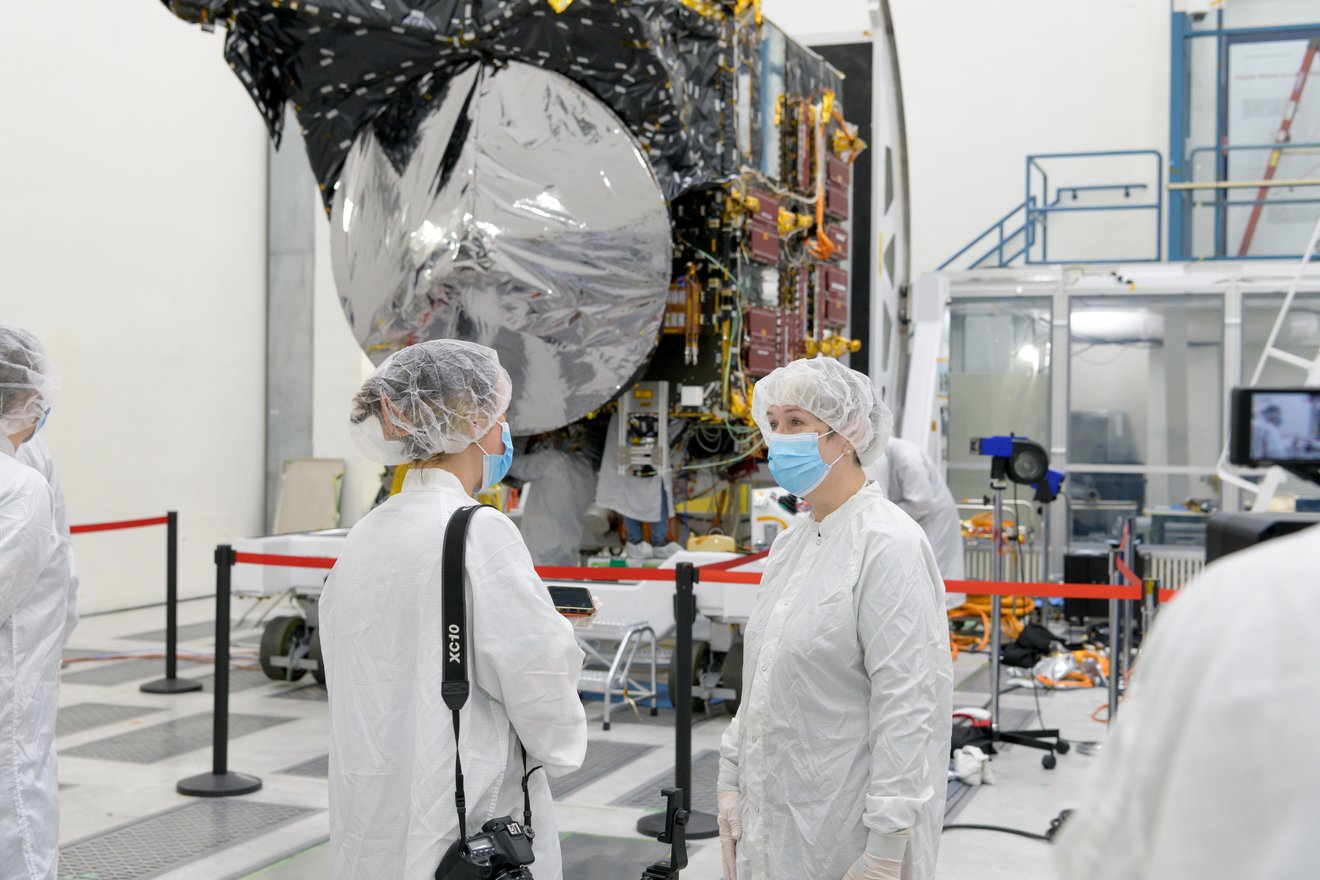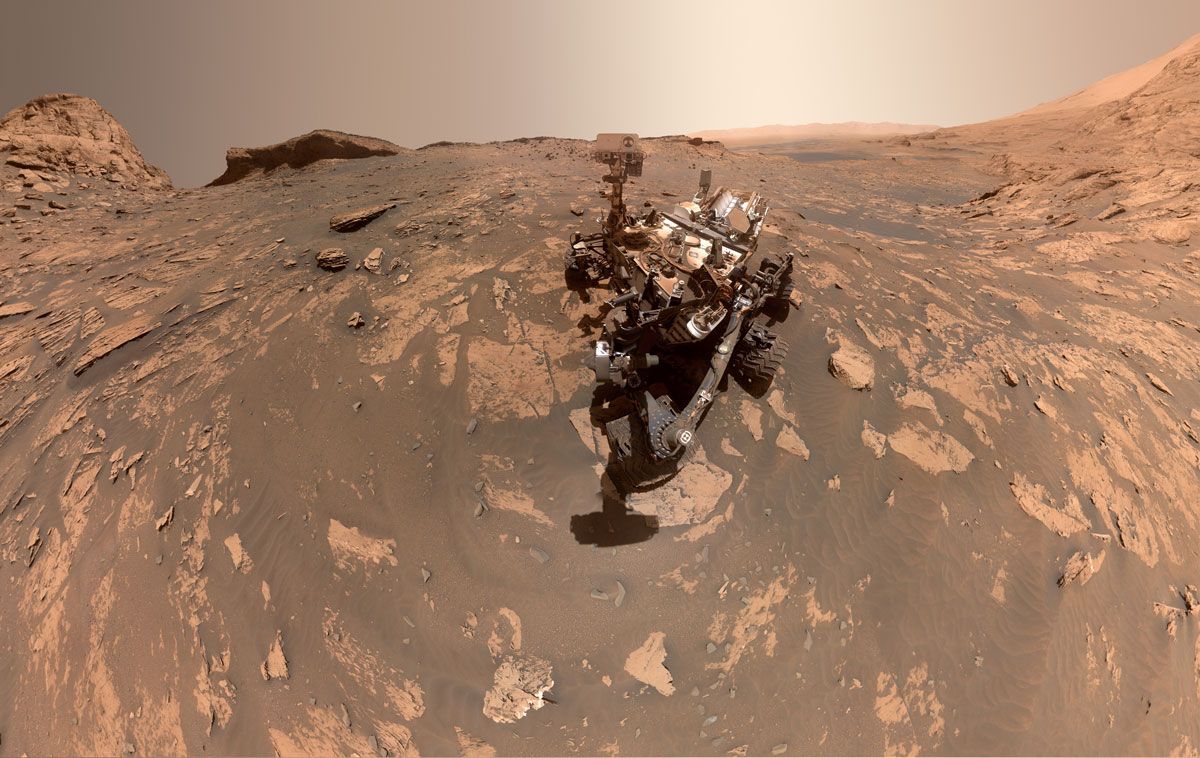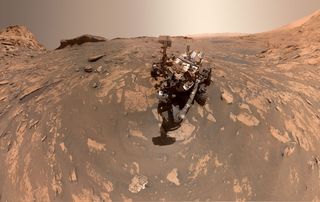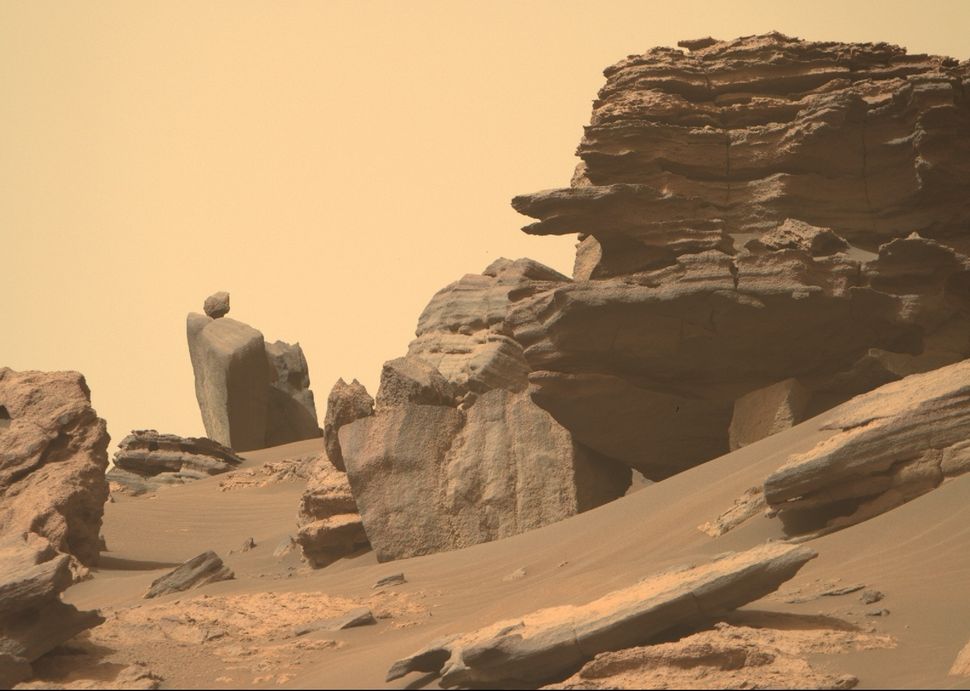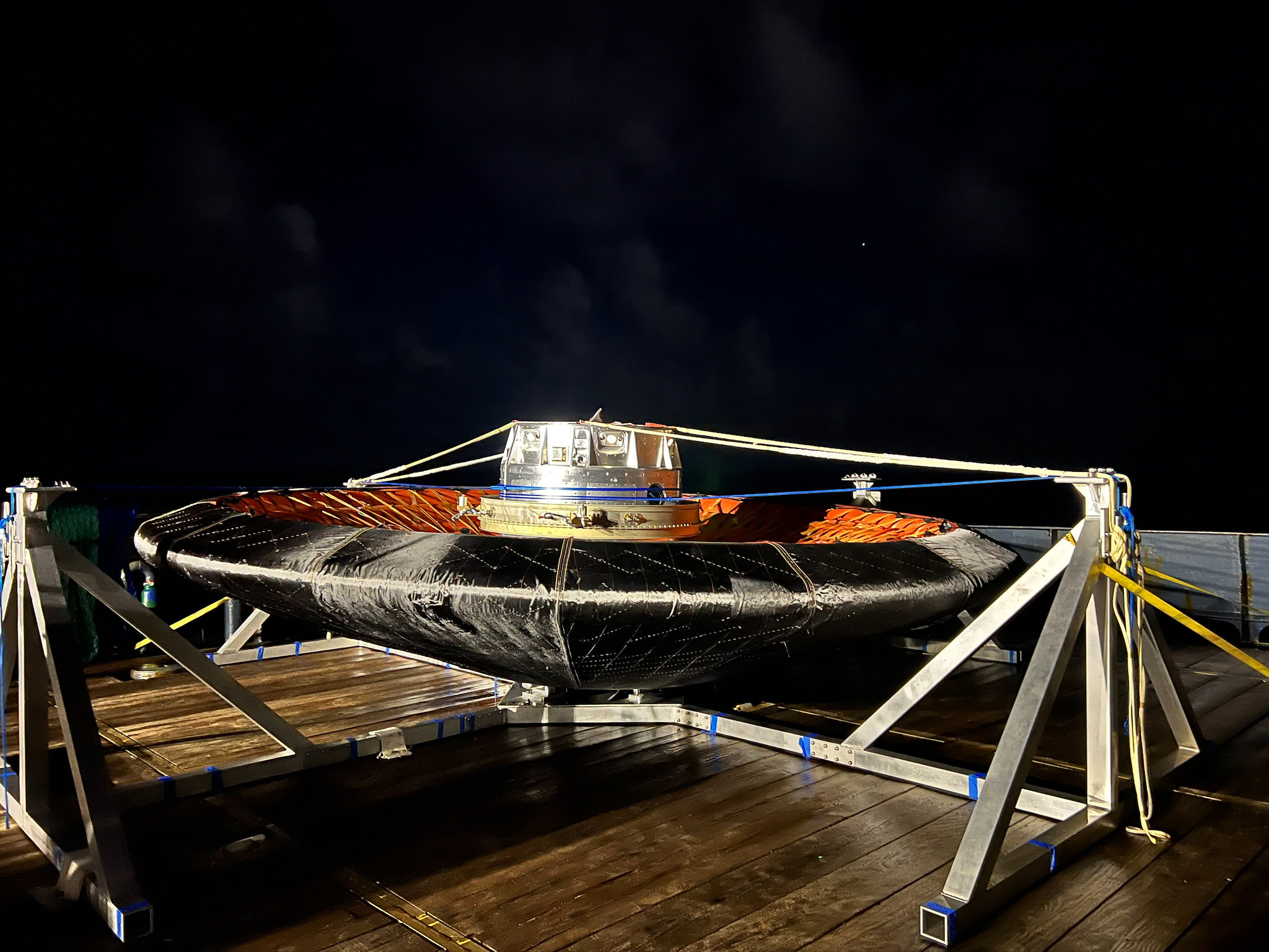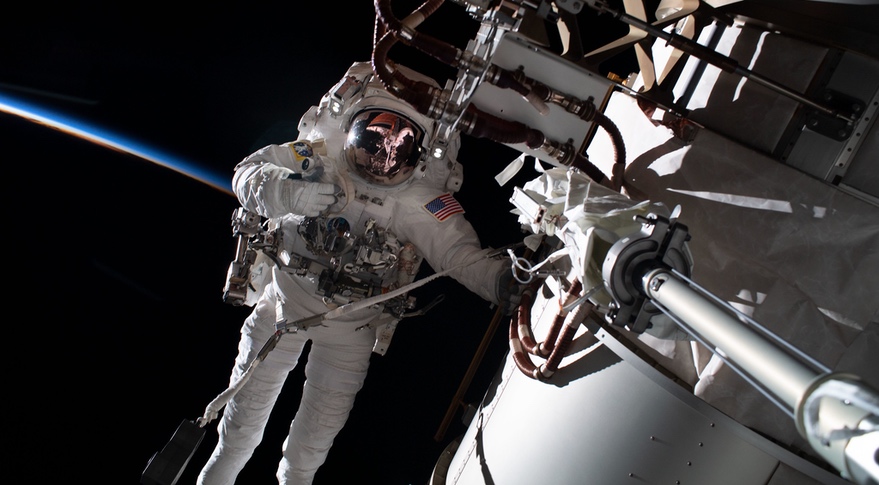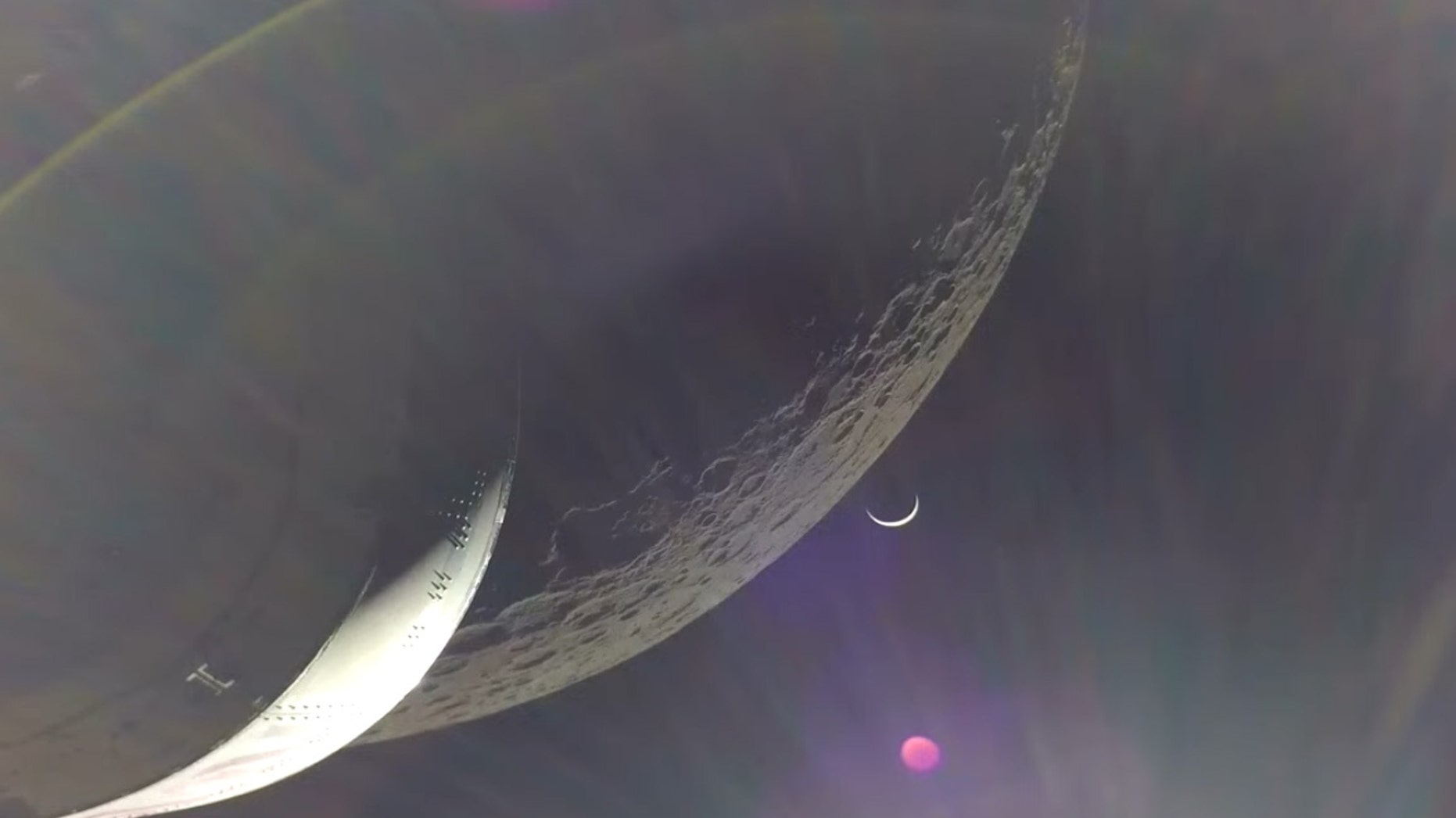Mars, the moon and asteroids will get a deeper look from these spacecraft.

www.space.com
These 8 NASA missions just got more time to explore Mars, asteroids and the solar system
NASA's Curiosity rover will be taking shots like this on Mars for another three years. (Image credit: NASA/JPL-Caltech/MSSS)
Eight interplanetary spacecraft have a go to continue their missions at Mars, the moon or various asteroids.
NASA extended these the work of these missions "due to their scientific productivity and potential to deepen our knowledge and understanding of the
solar system and beyond," the agency said in a
statement.
The decision to keep these longstanding missions going happened after independent reviews of their work, including academia, industry and NASA input. The panel evaluations comprising 50 reviewers "validated that these eight science missions hold substantial potential to continue bringing new discoveries and addressing compelling new science questions," the agency said.
1) Curiosity rover on Mars
NASA's Curiosity rover imaged Mars using its navigation cameras. (Image credit: NASA/JPL-Caltech)
Curiosity, also known as the Mars Science Laboratory (MSL), landed on
Mars in 2012 and will explore for another three years. It has spent several years climbing Mount Sharp (Aeolis Mons) after landing on the Red Planet's Gale Crater. It is on a long-term hunt to understand how water, and potential conditions for life, arose in that region of the planet.
"In its fourth extended mission, MSL will climb to higher elevations, exploring the critical sulfate-bearing layers which give unique insights into the history of water on Mars," NASA stated.
2) Lunar Reconnaissance Orbiter at the moon
NASA's Lunar Reconnaissance Orbiter photographed the Apollo 11 lunar module and the rest of the mission's landing site in 2009. (Image credit: NASA/GSFC/Arizona State University)
The
Lunar Reconnaissance Orbiter (LRO) has been in operation since 2009, and will work for another three years. It is best-known for mapping surface detail of
the moon in high-definition, tracking down landing missions (or crashes) past and present, and seeking preserves of ice water on the moon.
NASA will be using its data in planning for its
Artemis moon-landing program that plans boots on the surface no earlier than 2025, the agency said, giving LRO another three years for this work.
"LRO will continue to study the surface and geology of the moon," NASA stated of the extension. "The evolution of LRO's orbit will allow it to study new regions away from the poles in unprecedented detail, including the permanently shadowed craters near the poles where water ice may be found. LRO will also provide important programmatic support for NASA's efforts to return to the moon."
3) OSIRIS-APEX/OSIRIS-REx at asteroid Apophis
NASA's OSIRIS-REx spacecraft captured this image of the asteroid Bennu using its MapCam imager on Dec. 12, 2018. (Image credit: NASA/Goddard/University of Arizona)
The Origins, Spectral Interpretation, Resource Identification, Security-Regolith Explorer (
OSIRIS-REx) mission will have another stop after dropping off pieces of asteroid Bennu at Earth in 2023. The spacecraft, in flight since 2016, will be redirected to visit
Apophis, a near-Earth asteroid that was once deemed a slight threat to Earth in 2068. The mission will also acquire a new name: OSIRIS-Apophis Explorer (APEX).
The renamed mission will orbit Apophis shortly after the
asteroid safely comes within 20,000 miles (32,000 kilometers) of Earth in 2029, NASA stated. "It plans to study changes in the asteroid caused by its close flyby of Earth, and use the spacecraft’s gas thrusters to attempt to dislodge and study the dust and small rocks on and below Apophis’ surface."
OSIRIS-APEX will have a new principal investigator: Daniella DellaGiustina, a planetary scientist at the University of Arizona who is deputy principal investigator on the current mission, OSIRIS-REx. The principal investigator for OSIRIS-REx, planetary scientist Dante Lauretta from the same university, will pivot to analyzing samples from Bennu after their return.
4) MAVEN at Mars
An artist's depiction of NASA's MAVEN spacecraft in orbit around Mars. (Image credit: NASA/GSSFC)
The
Mars Atmosphere and Volatile EvolutioN mission (MAVEN) launched in November 2013 to look at changes in the atmosphere of the Red Planet. It is suspected that gradual erosion of the atmosphere over the eons led to less running water at the surface of Mars, when pressure dropped.
The extended mission, which will clock another three years, "plans to study the interaction between Mars' atmosphere and magnetic field during the upcoming solar maximum," NASA stated. "MAVEN's observations as the sun's activity level increases toward the maximum of its 11-year cycle will deepen our understanding of how Mars' upper atmosphere and magnetic field interact with the sun."
MAVEN will also acquire a new principal investigator: Shannon Curry, a planetary scientist at the University of California, Berkeley. (The previous one, Bruce Jakosky from the Laboratory for Atmospheric and Space Physics at the U
5) InSight Mars lander
NASA's InSight lander snapped this image of the area in front of it on July 20, 2021. (Image credit: NASA/JPL-Caltech)
nSight landed on Mars in 2018 and has been useful in getting information on "marsquakes" to learn more about the planet's interior and how that evolved over the eons.
The spacecraft has been working well, aside from the failure of a below-surface probe known as a "mole" and gradual dust buildup on its solar panels. Given its
shaky power status, the mission has a few more months tacked on its mission until the end of 2022, but may not last that long.
"The extended mission will continue InSight's seismic and weather monitoring if the spacecraft remains healthy," NASA stated. "However, due to dust accumulation on its solar panels, InSight's electrical power production is low, and the mission is unlikely to continue operations for the duration of its current extended mission unless its solar panels are cleared by a passing 'dust devil' in Mars’ atmosphere."
6) New Horizons in the Kuiper Belt
New Horizons launched in 2006 and has visited two worlds so far: dwarf planet
Pluto in 2015, and the
Kuiper Belt object
Arrokoth (2014 MU69) in 2019. The mission is expected to fly as far as 63 astronomical units (or Earth-sun distances) in its next three years, but what is coming next (and if another flyby is planned) is still under wraps.
"The New Horizons spacecraft can potentially conduct multi-disciplinary observations of relevance to the solar system, and NASA's heliophysics and astrophysics divisions. Additional details regarding New Horizons' science plan will be provided at a later date," NASA stated.
7) Mars Odyssey
This stunning view shows what an explorer might see on the Red Planet's north pole. This image is a 3D view created from observations recorded by the THEMIS instrument on NASA's Mars Odyssey spacecraft. Image released May 26, 2016. (Image credit: NASA/JPL/Arizona State University, R. Luk)
The
Mars Odyssey spacecraft started work in 2001 and continues to work well in its third decade in space. While NASA warned the mission is running low on propellant, it hopes to squeeze another three years from the mission. Besides being a remote scientist, Odyssey serves as a relay for other Mars spacecraft on the surface in sending their communications back to Earth.
On the science side, NASA stated, "Mars Odyssey's extended mission will perform new thermal studies of rocks and ice below Mars’ surface, monitor the radiation environment, and continue its long-running climate monitoring campaign."
8) Mars Reconnaissance Orbiter
A new crater on Mars, which appeared sometime between September 2016 and February 2019, shows up as a dark smudge on the landscape in this high-resolution photo from the Mars Reconnaissance Orbiter. (Image credit: NASA/JPL/University of Arizona)
The
Mars Reconnaissance Orbiter has been in service since 2005 and provides a long-term view of the surface of the Red Planet. It charts changes in sand dunes, ice caps and other features and also keeps an eye on missions on the Red Planet.
Aside from the loss of one instrument (the Compact Reconnaissance Imaging Spectrometer for Mars, or CRISM) due to a loss of coolant that shut down one of the two spectrometers, the mission should operate for another three years. MRO will continue its relay services for surface missions, too.
"In its sixth extended mission, MRO will study the evolution of Mars’ surface, ices, active geology, and atmosphere and climate. In addition, MRO will continue to provide important data relay service to other Mars missions," NASA stated.









